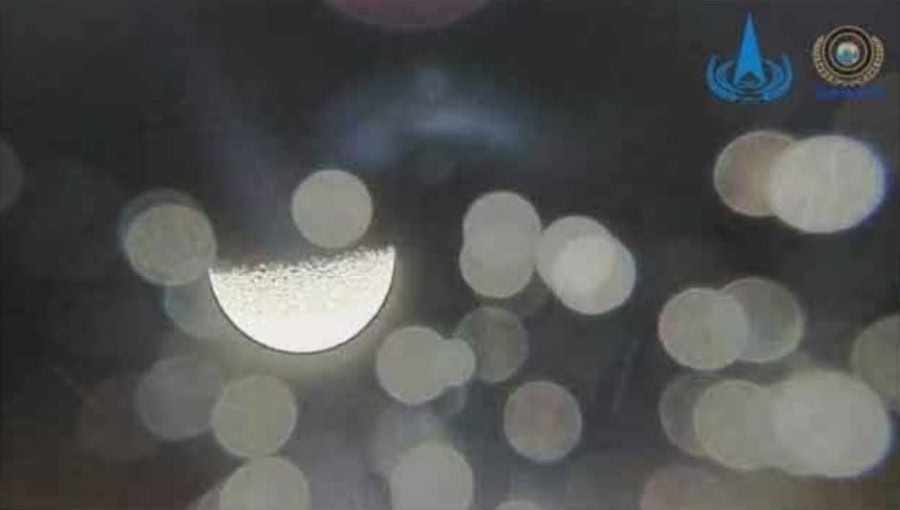ISLAMABAD – Institute of Space Technology on Friday shared the first images of the Moon captured by country’s first lunar mission iCube-Qamar.
The pictures were received after the space mission completed three rounds of the lunar orbit.
The first mission of Asian nation was launched as part of Beijing’s Chang’e-6 lunar mission from Hainan province a week back; it entered the moon’s orbit on May 8.
The satellite was developed by Islamabad’s Institute of Space Technology (IST) in collaboration with China’s Shanghai University (SJTU) and Pakistan’s national space agency SUPARCO.

iCube-Qamar first images from the lunar orbit were shared at a ceremony at the China National Space Agency (CNSA) and were handed over to Pakistan’s ambassador to China. iCube-Qamar carries two optical cameras for imaging the lunar surface and is a CubeSat, a type of miniature satellite known for its small size and cubic design.
The lunar mission is known for its low cost as compared to other satellites and it brings opportunities for universities, research institutions, and commercial entities to participate in space missions and gather valuable scientific data.
IST officials highlighted satellite’s role in deep space missions, providing crucial data on the moon’s surface features. iCube-Qamar will spend three to six months orbiting the moon, capturing and transmitting images back to Earth as the Chinese lander collects samples.

The opportunity to release CubeSat in lunar orbit was offered by the CNSA through the Asia Pacific Space Cooperation Organisation (APSCO), with Pakistan’s proposal being accepted out of all APSCO member states. The Chang’e-6 mission aims to explore the moon’s “dark side” and collect lunar samples for analysis, involving payloads from multiple countries including Pakistan’s iCube-Qamar satellite.
According to the Pakistan Space and Upper Atmosphere Research Commission (SUPARCO), the iCube Qamar satellite successfully entered lunar orbit on May 8. This satellite is equipped with two cameras that are currently capturing images of the moon from a distance of 200 kilometers.
iCube-Q satellite was designed and developed by Institute of Space Technology (IST) in collaboration with China’s Shanghai University SJTU and SUPARCO. This mission is significant for Pakistan as it marks the country’s first lunar mission.
China’s Chang’e 6 mission, part of its lunar exploration program, will land on the far side of the moon to collect samples for research purposes. This mission will also carry the iCube-Q satellite developed by IST, further highlighting Pakistan’s involvement in space exploration.
Pakistan successfully launches first lunar orbit mission ‘ICUBE-Qamar’










